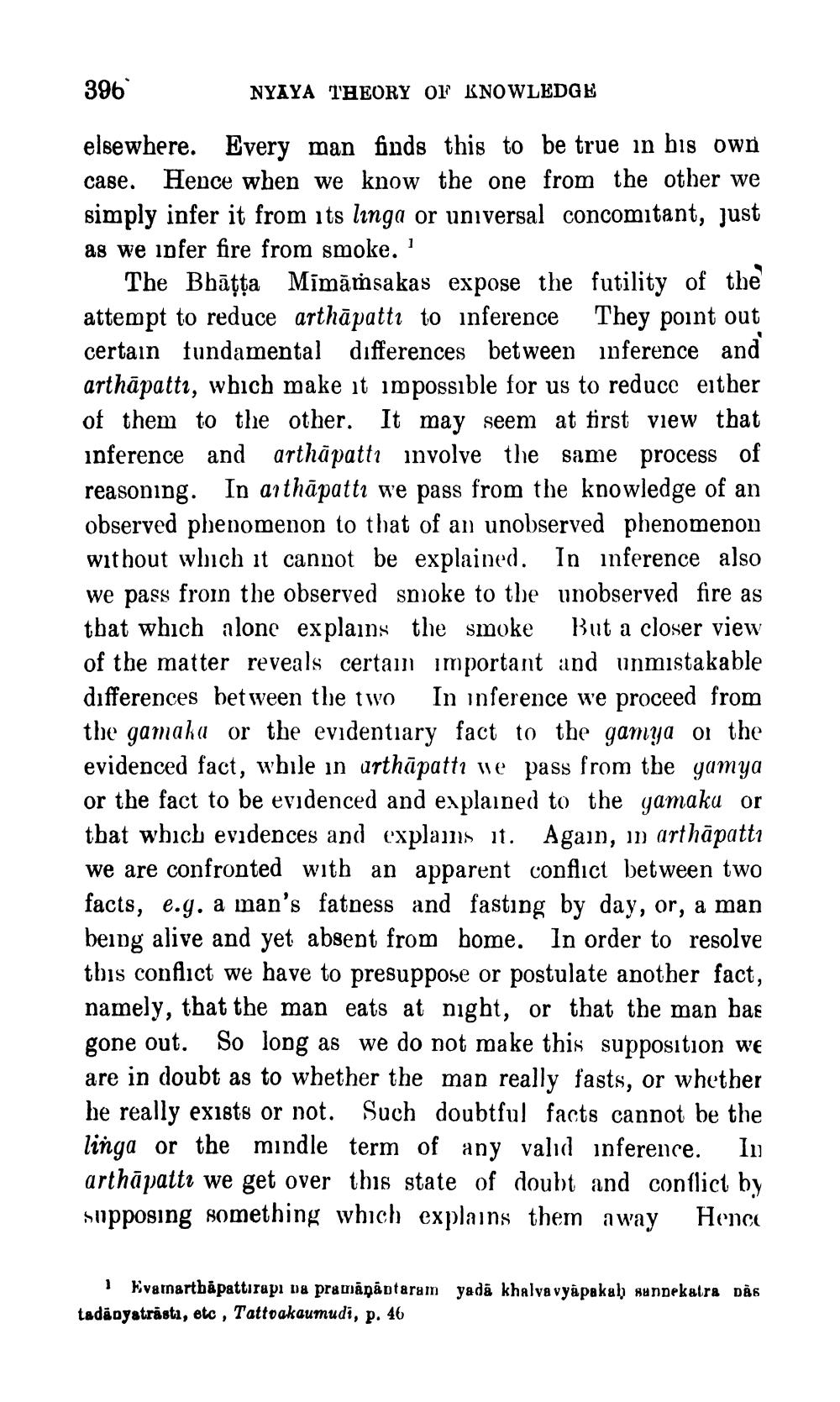________________
396
NYAYA THEORY OF KNOWLEDGE
elsewhere. Every man finds this to be true in his own case. Hence when we know the one from the other we simply infer it from its linga or universal concomitant, just as we infer fire from smoke. 1
futility of the
The Bhaṭṭa Mimamsakas expose the attempt to reduce arthapatti to inference They point out certain fundamental differences between inference and arthapattı, which make it impossible for us to reduce either of them to the other. It may seem at first view that inference and arthapattı involve the same process of reasoning. In arthapatti we pass from the knowledge of an observed phenomenon to that of an unobserved phenomenon without which it cannot be explained. In inference also we pass from the observed smoke to the unobserved fire as that which alone explains the smoke But a closer view of the matter reveals certain important and unmistakable differences between the two In inference we proceed from the gamaka or the evidentiary fact to the gamya or the evidenced fact, while in arthapatti we pass from the gamya or the fact to be evidenced and explained to the gamaka or that which evidences and explains it. Again, in arthāpattı we are confronted with an apparent conflict between two facts, e.g. a man's fatness and fasting by day, or, a man being alive and yet absent from home. In order to resolve this conflict we have to presuppose or postulate another fact, namely, that the man eats at night, or that the man has gone out. So long as we do not make this supposition we are in doubt as to whether the man really fasts, or whether he really exists or not. Such doubtful facts cannot be the linga or the mindle term of any valid inference. In arthāpatte we get over this state of doubt and conflict by Supposing something which explains them away Hence
1 Evamarthapattırapi na pramaņāntaram yada khalva vyapakah sannekatra nas tadanysträsti, etc, Tattvakaumudi, p. 46




